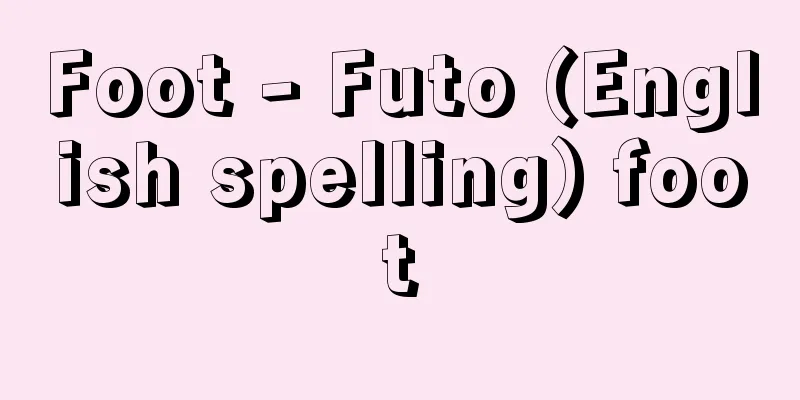Kesseo - Kesseo

|
It refers to land without an owner or property without an owner, and by extension, refers to the punishment for confiscation of property in the Middle Ages and early modern period, as well as confiscated property. (1) In the Middle Ages, this meant that a master would confiscate the property and status of his servants. This was mainly practiced among samurai families and was also called shukou (confiscation) or kaieki (disposal). From the Kamakura Shogunate to the early Muromachi Shogunate, when the Shogunate confiscated the land of a Gokenin (a retainer) as a punishment, the family members and the previous owner of the land could claim compensation. The Muromachi Shogunate left the decision-making power on disposal of kensho to the Shugo, which became one of the opportunities for the Shugo to turn the samurai in their territories into vassals. Even if there was an actual owner, a land may be referred to as kensho from the viewpoint of an opposing political force. Land that is currently kensho may be called the remains of a certain someone, with the name of the previous owner added. (2) In the early modern period, it was an additional punishment for ordinary people, such as the death penalty, exile, or banishment. Those who received the severest form of banishment or more were deprived of their fields, homes, and possessions. [Tokuhiko Ushita] Source: Shogakukan Encyclopedia Nipponica About Encyclopedia Nipponica Information | Legend |
|
領有者のいない所領、所有者のない財産のことで、転じて中世・近世の財産没収刑、また没収された財産をいう。 (1)中世では、主人が従者の財産・地位を没収することで、おもに武家で行われ、収公(しゅうこう)・改易(かいえき)ともいった。鎌倉幕府から室町幕府の初期では、幕府が刑罰として御家人(ごけにん)の所領を没収すると、一族の者やその所領の前の領有者が給付を請求できた。室町幕府は闕所処分の決定権を守護にゆだねたので、守護が管国内の武士を被官化する一つの契機となった。実際は領有者があっても、敵対する政治勢力の側からみて闕所と称することもある。現に闕所となっている所領を、直前の領有者の名を付して何某跡(あと)ということがある。 (2)近世では一般庶民に対する死罪、遠島、追放などの刑罰の付加刑。重追放以上は田畑・家屋敷・家財が闕所とされた。 [羽下徳彦] 出典 小学館 日本大百科全書(ニッポニカ)日本大百科全書(ニッポニカ)について 情報 | 凡例 |
Recommend
Marine relict species
...This refers to the situation where an animal t...
Aida Maikki - Aida Maikki
...The Tokushima Domain, however, focused on the ...
Ozu Family - Ozuke
… Ise merchants were famous not only for their ki...
Money Lending Business Regulation Act
⇒Money Lending Business Act Source: About Shogakuk...
Ballad in Secret Language - Ballad by Ingo
At present, there are four groups of works that c...
Bellini, G. (English spelling) BelliniG
…For two generations, father and son played a lea...
Idris - Idris
…789-926. The fourth caliph, Idris b.'Abd All...
Pseudofovea
…However, depending on the animal, the sensitivit...
Astomi - Astomi
…Pliny the Elder's representative work, Natur...
Shoes (kutsu/shoes) - shoes
Japanese footwear that covers and encases the foot...
Vaginal candidiasis
What is the disease? In women of reproductive age...
Stonehenge - Stonehenge (English spelling)
A megalithic monument located almost in the cente...
Nogi Shrine
Located in Akasaka, Minato Ward, Tokyo. The deity...
Regnault, HV (English spelling) RegnaultHV
…During this time, he had already published about...
Schulz, CM (English spelling) SchulzCM
…A beagle dog that appears in the newspaper comic...









